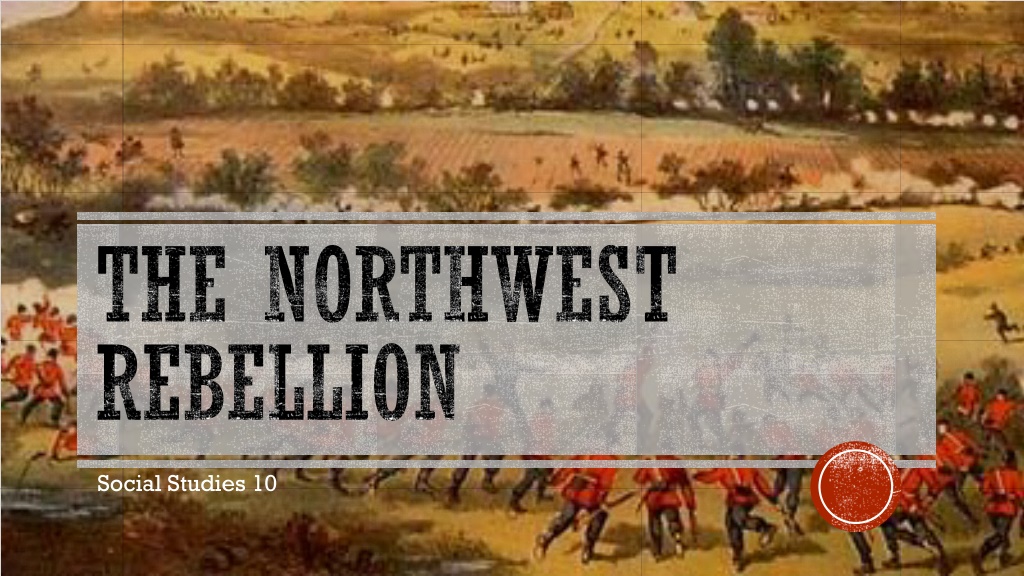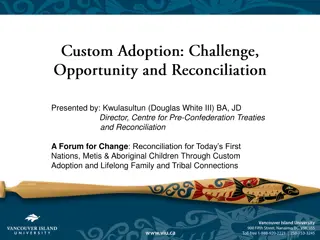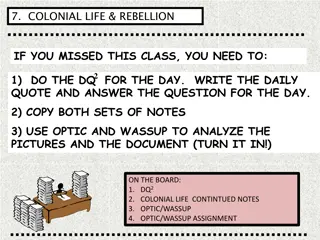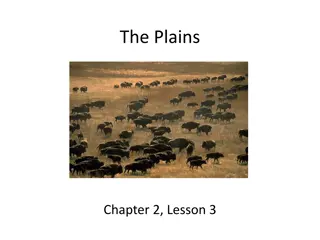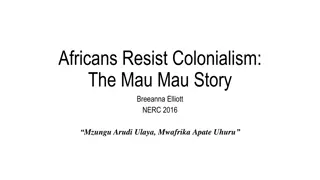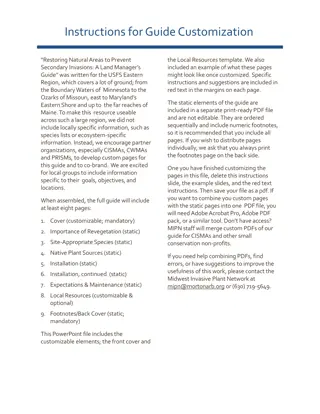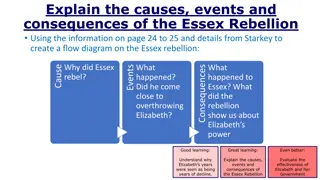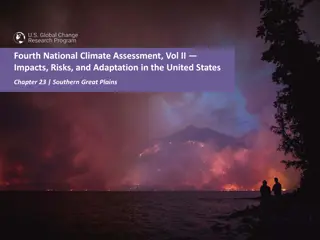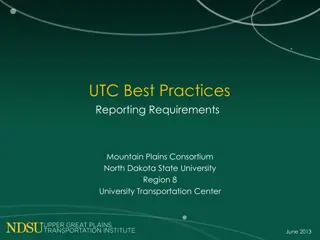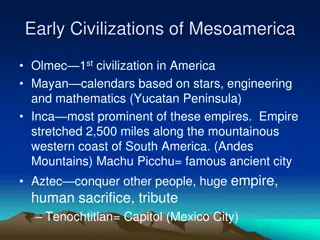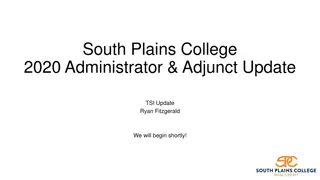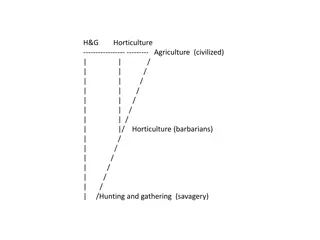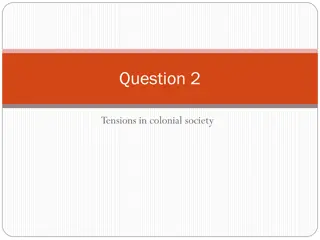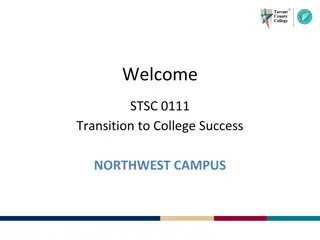The Northwest Rebellion and Its Impact on Metis and Plains Peoples
The Northwest Rebellion in Canada during the late 19th century saw significant challenges faced by the Metis and Plains Peoples. The Metis struggled with broken promises of land, sparking anger and a call for ownership rights. In contrast, the Plains Peoples faced starvation as they became reliant on government assistance due to the near extinction of the buffalo. These struggles culminated in figures like Louis Riel returning to Canada to lead the Metis in revolt.
Download Presentation

Please find below an Image/Link to download the presentation.
The content on the website is provided AS IS for your information and personal use only. It may not be sold, licensed, or shared on other websites without obtaining consent from the author. Download presentation by click this link. If you encounter any issues during the download, it is possible that the publisher has removed the file from their server.
E N D
Presentation Transcript
THE NORTHWEST REBELLION Social Studies 10
LETS RECALL What were some of the problems facing the Metis after 1870? What were some of the problems facing the Plains Peoples in the same decade?
THE METIS LOSE PATIENCE By the 1800s, Metis anger towards the Canadian government was continuously growing They had already moved from Manitoba to the Northwest Territories because they couldn t get the land they were promised Now in their new home, they continued to ask the government for title to the land so they could farm
JOHN A. MACDONALDS VISION However, the land surveyors who had surveyed the region for the government in the 1870s had found that there was about 16 million acres in the Northwest that was suitable for farming Much of this land was owned by land speculators who would give a percentage of the profit they made from each sale to the government MacDonald calculated that the government could make 71 million dollars if most of that land was sold, more than the government had invested in the Canadian Pacific Railroad Some have even suggested that he deliberately provoked the Metis into rebellion so that voters would see the railroad as necessary to bring troops west
A NOURISHMENT BY NEGLECT At the same time, the Plains People in the region were nearing starvation After signing the treaties, they were completely dependent on the government for food and other essentials because of the near extinction of the buffalo To keep them in line, the government would threaten Natives who they thought would rebel by threatening to take away their food and other essentials
RIEL RETURNS TO CANADA After the Red River Rebellion, Riel had fled to the United States He settled in Montana, where became a US citizen, worked as a schoolteacher and campaigned for the Republican Party Despite having been banned from Canada for five years, he had been elected to parliament twice, though he was barred from taking his seat But in 1884, Gabriel Dumont led a delegation of Metis to convince Riel to return to Canada to lead his people again
A CANADIAN CIVIL WAR? Riel initially wanted to lead his people peacefully, but to the government his presence meant that another revolt was happening Conservative Party supporters in the Northwest warned MacDonald that the Metis were planning to revolt alongside the Plains People Gabriel Dumont wrote in 1884 that The Government should not be surprised if we side with the Indians. They are our relatives, and when they are starving, they come to us We desire the Indians to be fed; because if they are not we ourselves will be kept in poverty. The NWMP made an investigation and reported that nearly 1000 Metis and Natives were ready to start an armed rebellion How would this have been different from the Red River Rebellion?
WAR IS ON THE HORIZON Riel initially tried to deal with the crisis peacefully; he wrote a new Metis Bill of Rights that more closely resembled the American Declaration of Independence It took a more critical tone than the 1870 document, laying out the many injustices that both the Metis and the Plains People had suffered since then But the government failed to respond, leading Riel and his supporters to form a new Provisional Government of Saskatchewan, believing that it would give him more leverage with the government His first action was to send Gabriel Dumont and a large armed group to the NWMP base of Fort Carlton to demand it surrender peacefully Leif Crozier, the commander of the base refused to do so, and a battle soon broke out The Northwest Rebellion had begun
THE NORTHWEST REBELLION Despite being outnumbered and having inferior weapons, the Metis knew the land well and were determined to assert their rights and freedoms In addition, members of the Iron Confederacy, an alliance of Cree and Assiniboine, joined the rebellion due to their mutual grievances with the government The Metis and Iron Confederacy members achieved some victories at first, such as at Fort Carlton, Fort Pitt, and Cut Knife. Perhaps the most impressive victory was at the Battle of Fish Creek, where a group of just 60 Metis and Dakota natives led by Gabriel Dumont held off a force of 1600 Canadian troops, forcing them to retreat But the Canadian troops simply had too many soldiers and bullets for the Metis to win the war in the end
THE BATTLE OF BATOCHE The decisive battle of the war was the siege of Batoche, the capital of Riel s provisional government The Metis and their Native allies were dug in and determined to defend their rights But the Canadian troops heavily outnumbered them, and had artillery guns to support them The Metis managed to repel continuous Canadian attacks for 2 days However, they soon ran out of bullets and were reduced to shooting nails and rocks from their guns Canadian troops took this chance to charge the Metis positions, ending the battle Gabriel Dumont escaped to the US, but Riel surrendered himself after a few days Although the Native resistance continue for a few more months, the rebellion was essentially over
WHY DID THE REBELLION FAIL? While he was living in Montana, Riel began to develop an intense religious complex, believing that he was a prophet sent by God and began to renounce the Catholic Church While Gabriel Dumont believed that they should have used guerilla tactics to fight the troops, Riel believed that God had ordered him to wait until Batoche was attacked and to defend it If Riel had listened to Dumont and adopted hit and run style attacks, do you think the rebellion could have gone differently?
BATTLE OF BATOCHE SIMULATION Next class, we will be doing simulations of the Battle of Batoche to explore how the Battle might have gone differently if you had been the Metis commanding officer
THE SETTING We will be using a grid map like this to simulate the battle on
TO PREPARE FOR THE BATTLE Read the Battle of Batoche simulation instruction sheet, along with the corresponding strategy readings Make sure to do the pre-battle prep for next Tuesday s class; the readings, reading the instructions, and the pre-battle questions.
